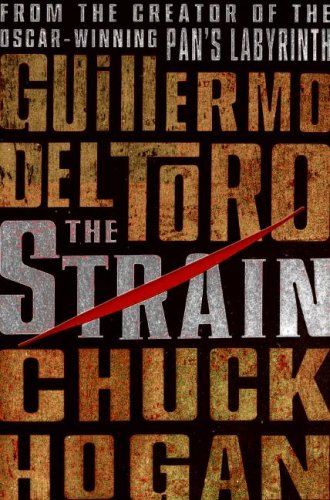You know something’s rotten in Manhattan when a host of cadavers is missing from an airtight morgue.
“Well, they couldn’t have just walked off…” says one surgeon in Guillermo del Toro’s 2009 fiction debut, “The Strain.”
Unfortunately for the surgeon, some cadavers simply won’t stay put. So begins “The Strain,” a collaborative work between visionary film director del Toro and seasoned novelist Chuck Hogan. What makes this writing team most fascinating is the contribution each man has given–– not to the literary arena, but to cinema.
Filmmaker collaborates with novelist on trilogy
Del Toro’s works, while rarely blockbusters, have found critical success for their art direction and dialogue (see “Pan’s Labyrinth”), while Hogan is responsible for the novel that begat this past September’s Oscar contender, “The Town.”
The sum of these artists’ collaboration— a vampire trilogy beginning with “The Strain” in 2009 and continuing this October with “The Fall”–– strongly reflects their cinematic sensibilities.
“The Strain” trilogy opens with a bit of semi-apocalyptic imagery: an eclipse that darkens Manhattan, portending the doom-and-gloom that the vampire virus will wreak on poor humankind.
Characters race to combat vampire virus
The protagonist of the trilogy, Ephriam Goodweather, director of a secret scientific service known as Canary (reminiscent of the Bureau for Paranormal Research and Defense from del Toro’s “Hellboy” films) must bring an end to the vampire strain, a monster-making germ with nasty side effects in the bowels.
Ephriam is mentored by a crusty Holocaust survivor Abraham Setrakian, a pawnshop broker bent on defeating the vampire Master, a spirit who has taken possession of a very old giant.
The trilogy’s first two installments toy with what del Toro does best: myth- making, myth-manipulating and fantastic set design. Del Toro adores Grimm-like folktales––the trilogy opens with “The Legend of Jusef Sardu”–– and Setrakian’s pawnshop and anti-vampire arsenal would make for a terribly charming photograph.
Book struggles to overcome cinematic roots
Unfortunately, del Toro and Hogan stumble with the book’s requirements as a book. While both men have given much to film, “The Strain” indicates that they are not sure how to give much to the printed word.
This is not a fault that is unique to “The Strain.” A typical page-turner at Costco offers much entertainment and a quick read, but page-turners— or rather, their authors— have been so influenced by the visual medium of film, that they are not quite as secure with writing books. Grammar and vernacular poetry are exchanged for words that paint pictures. The result is a stack of books, from the likes of James Patterson and Clive Cussler, that try to be films.
Indeed, “The Strain” reads less like a memorable thriller than a 100-page screenplay bloated into a 600-page paperback–– whatever the laudatory comments say. No one expects Poe when they pick up either “The Strain” or its sequel, but the least del Toro and Hogan could do, for the sake of the printed word, is to craft words that can be read out loud without embarrassment. The trilogy’s prose reads like too many screen directions, and the dialogue is short and quipped, which is entirely appropriate for film, but out of place in a book.
Second book in the trilogy continues cinematic style
Unfortunately, while “The Fall” improves on “The Strain” in vernacular lyricism, it makes no improvements in the way of dialogue. The story rings of cinematic influence in both its structure–– opening the story with flashbacks–– and its less-than-inspiring action sequences.
Of course, “The Strain” shifted many copies on the New York Times list, and not without good reason. Del Toro’s vampire mythology is mostly steeped in the classical interpretation, such as sleep in coffins, avoidance of sunlight, and vulnerability to silver, and creates a history for the vampire myths. The Master is no Cullen, and the stakes (especially the silver kind) are intense.
Perhaps del Toro will get around to adapting these novels for the big screen, cutting the excesses and giving his fan base a visual treat in a medium specifically designed for visual art. Until then, “The Strain” trilogy will remain merely a filmable book instead of a great book. When it comes to the printed word and vampires, Stephanie Meyer has a leg up on del Toro and Hogan, if only because she knows that she is writing books.







